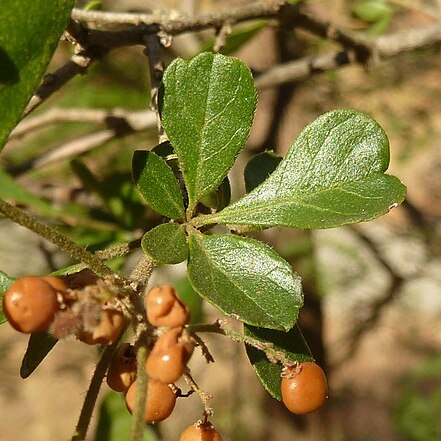Tree or shrub, 1.0-2.3 m high; single to multi-stemmed, deciduous, spreading; bark grey-brown, smooth; young branchlets pale brown, glabrous. Leaves petiolate, (3-)5(-7)-foliolate, with or without 2 much-reduced leaflets; leaflets sessile, membranous, glabrous, dark green above, pale olive below, turning orange-red in autumn, elliptic to narrowly elliptic or obovate, margins entire or pauciserrate in upper half, teeth mucronulate. Inflorescence axillary and terminal, much-branched panicles. Flowers small, yellowish. Flowering time Oct.-Mar. Fruit a drupe, circular, obloid, glabrous, shiny, pale brown.
Single to multistemmed, deciduous shrub or small tree, up to 2 m high. Leaves rarely up to 7 leaflets. Leaflets sessile; blade glabrous, dark green above, pale olive below, elliptic to narrowly elliptic, margins entire or serrate in upper half; terminal leaflet (27-)44(-68) x (8-) 12(-16) mm. Flowers: Oct.-Jan. Fruit an obloid, glabrous drupe.
Slender, single-to multistemmed, deciduous shrub to small tree, up to 2.25 m high. Leaves consistently 4-7-foliolate; leaflets generally toothed, sessile, elliptic to narrowly elliptic obovate; terminal leaflets (27-)44(-68) x (8-)12(-16) mm. Drupe circular, obloid.
A shrub. It loses its leaves during the year. It grows 2 m tall. The leaves can have 5-7 leaflets. There can be teeth along the upper half. The fruit are oblong and fleshy. They are pale brown and 3.5 mm long by 4 mm wide.


